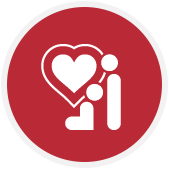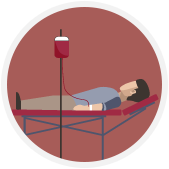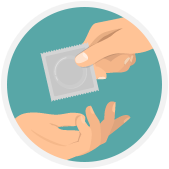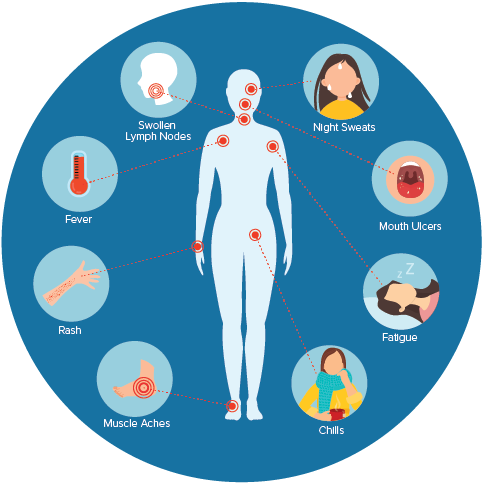HIV/STI TEST
About HIV/AIDS
HIV stands for human immunodeficiency virus. It weakens a person’s immune system by destroying important cells that fight disease and infection. There is currently no effective cure for HIV. But with proper medical care, HIV can be controlled. Some groups of people in the United States are more likely to get HIV than others because of many factors, including their sex partners and risk behaviors. This section will give you basic information about HIV, such as how it’s transmitted, how you can prevent it, and how to get tested for HIV.

HIV is transmitted through penetrative (anal or vaginal) and oral sex; blood transfusion; the sharing of contaminated needles in health care settings and through drug injection; and, between mother and infant, during pregnancy, childbirth and breastfeeding.
You can get HIV if you have anal sex with someone who has HIV without using protection (like condoms or medicine to treat or prevent HIV).
Anal sex is the riskiest type of sex for getting or transmitting HIV.
Being the receptive partner (bottom) is riskier for getting HIV than being the insertive partner (top).
The bottom’s risk of getting HIV is very high because the rectum’s lining is thin and may allow HIV to enter the body during anal sex.
The top is also at risk because HIV can enter the body through the opening at the tip of the penis (or urethra), the foreskin if the penis isn’t circumcised, or small cuts, scratches, or open sores anywhere on the penis.
You can get HIV if you have vaginal sex with someone who has HIV without using protection (like condoms or medicine to treat or prevent HIV).
Vaginal sex is less risky for getting HIV than receptive anal sex.
Either partner can get HIV during vaginal sex.
Most women who get HIV get it from vaginal sex. HIV can enter a woman’s body during vaginal sex through the mucous membranes that line the vagina and cervix.
Men can also get HIV during vaginal sex. This is because vaginal fluid and blood can carry HIV. Men get HIV through the opening at the tip of the penis (or urethra), the foreskin if the penis isn’t circumcised, or small cuts, scratches, or open sores anywhere on the penis.
You are at high risk for getting HIV if you share needles, syringes, or other drug injection equipment (for example, cookers) with someone who has HIV. Never share needles or other equipment to inject drugs, hormones, steroids, or silicone.
Used needles, syringes, and other injection equipment may have someone else’s blood on them, and blood can carry HIV.
People who inject drugs are also at risk for getting HIV (and other sexually transmitted diseases) because they may engage in risky sexual behaviors like having sex without protection (such as condoms or medicine to prevent or treat HIV).
You’re also at risk for getting hepatitis B and C, and other infections if you share needles, syringes, or other injection equipment.
HIV can be transmitted from a mother to her baby during pregnancy, birth, or breastfeeding. However, it is less common because of advances in HIV prevention and treatment.
This is called perinatal transmission or mother-to-child transmission.
Mother-to-child transmission is the most common way that children get HIV.
Recommendations to test all pregnant women for HIV and start HIV treatment immediately have lowered the number of babies who are born with HIV.
If a mother with HIV takes HIV medicine daily as prescribed throughout pregnancy and childbirth, and gives HIV medicine to her baby for 4 to 6 weeks after giving birth, the risk of transmitting HIV to the baby can be less than 1%.
What are some rare ways that HIV has been transmitted?
There is little to no risk of getting HIV from the activities below. For transmission to occur, something very unusual would have to happen.
-

Oral Sex
Oral sex involves putting the mouth on the penis (fellatio), vagina (cunnilingus), or anus (rimming).
Factors that may affect this risk include ejaculation in the mouth with oral ulcers, bleeding gums, or genital sores, and the presence of other sexually transmitted diseases (STDs).
You can get other STDs from oral sex. And if you get feces in your mouth during anilingus, you can get hepatitis A and B, parasites like Giardia, and bacteria like Shigella, Salmonella, Campylobacter, and E. coli.
-

Workplace
The most likely cause is being stuck with a contaminated needle or another sharp object.
Careful practice of standard precautions protects patients and health care personnel from possible occupational HIV transmission.
-

Medical Care
The US blood supply and donated organs and tissues are thoroughly tested, so it is very unlikely that you would get HIV from blood transfusions, blood products, or organ and tissue transplants.
You cannot get HIV from donating blood. Blood collection procedures are highly regulated and safe.
-

Pre-Chewed Food
The only known cases are among infants. Contamination occurs when blood from a caregiver’s mouth mixes with food that is pre-chewed before feeding to an infant.
You can’t get HIV from consuming food handled by someone with HIV
-

Biting
Each of the very small number of documented cases has involved severe trauma with extensive tissue damage and the presence of blood. Transmission can occur when there is contact between broken skin, wounds, or mucous membranes and blood or body fluids mixed with the blood of a person who has HIV.
There is no risk of transmission if the skin is not broken.
-

Deep, Open-Mouth Kissing
Although very rare, transmission can occur if both partners have sores or bleeding gums and blood from the partner with HIV gets into the bloodstream of the HIV-negative partner.
HIV is not transmitted through closed-mouth or “social” kissing with someone who has HIV.
HIV is not transmitted through saliva
-

Female-to-Female
Case reports of female-to-female transmission of HIV are rare.
Vaginal fluids and menstrual blood may carry the virus and exposure to these fluids through mucous membranes (in the vagina or mouth) could potentially lead to HIV infection.
-

Tattoos and Body Piercings
There are no known cases in the United States of anyone getting HIV this way.
However, it is possible to get HIV from tattooing or body piercing if the equipment used for these procedures has someone else’s blood in it or if the ink is shared. This is more likely to happen when the person doing the procedure is unlicensed because of the potential for unsanitary practices such as sharing needles or ink.
If you get a tattoo or a body piercing, be sure that the person doing the procedure is properly licensed and that they use only new or sterilized needles, ink, and other supplies.
What can increase the risk of getting or transmitting HIV?
-

Viral Load
The higher someone’s viral load, the more likely that person is to transmit HIV.
Viral load is the amount of HIV in the blood of someone who has HIV.
Viral load is highest during the acute phase of HIV, and without HIV treatment.
Taking HIV medicine can make the viral load very low—so low that a test can’t detect it (called an undetectable viral load).
People with HIV who keep an undetectable viral load (or stay virally suppressed) can live long, healthy lives. Having an undetectable viral load also helps prevent transmitting the virus to others through sex or sharing needles, syringes, or other injection equipment, and from mother to child during pregnancy, birth, and breastfeeding.
-

Other Sexually Transmitted Diseases
If you have another sexually transmitted disease (STD), you may be more likely to get or transmit HIV.
Getting tested and treated for STDs can lower your chances of getting or transmitting HIV and other STDs.
If you have HIV and get and keep an undetectable viral load, getting an STD does not appear to increase the risk of transmitting HIV. But STDs can cause other problems.
Using condoms can reduce your chances of getting or transmitting STDs that can be transmitted through genital fluids, such as gonorrhea, chlamydia, and HIV.
Condoms are less effective at preventing STDs that can be transmitted through sores or cuts on the skin, like human papillomavirus, genital herpes, and syphilis.
If you’re sexually active, you and your partners should get tested for STDs, even if you don’t have symptoms. To get tested for HIV or other STDs, find a testing site near you.
-

Alcohol and Drug Use
When you’re drunk or high, you’re more likely to engage in risky sexual behaviors like having sex without protection (such as condoms or medicine to prevent or treat HIV).
Being drunk or high affects your ability to make safe choices.
Drinking alcohol, particularly binge drinking, and using “club drugs” can alter your judgment, lower your inhibitions, and impair your decisions about sex or drug use.
You may be more likely to have unplanned sex, have a harder time using a condom the right way every time you have sex, have more sexual partners, or use other drugs.
If you’re going to a party or another place where you know you’ll be drinking or using drugs, you can bring a condom so that you can reduce your risk of getting or transmitting HIV if you have vaginal or anal sex.
Counseling, medicines, and other methods are available to help you stop or cut down on drinking or using drugs. Talk with a counselor, doctor, or other health care provider about options that might be right for you.
Some people have flu-like symptoms within 2 to 4 weeks after infection (called acute HIV infection). These symptoms may last for a few days or several weeks. Possible symptoms include
Fever
Chills
Rash
Night sweats
Muscle aches
Sore throat
Fatigue
Swollen lymph nodes
Mouth ulcers
But some people may not feel sick during acute HIV infection. These symptoms don’t mean you have HIV. Other illnesses can cause these same symptoms.

Use Condoms the Right Way Every Time You Have Sex
Condoms are highly effective in preventing HIV and other sexually transmitted diseases (STDs), like gonorrhea and chlamydia.
Use water-based or silicone-based lubricants to help prevent condoms from breaking or slipping during sex.
Learn the right way to use a male condom and a female condom
Take PrEP( is not free in Korea)
PrEP (pre-exposure prophylaxis) is medicine people at risk for HIV take to prevent HIV.
If taken as prescribed, PrEP is highly effective for preventing HIV from sex.
PrEP is much less effective when it is not taken as prescribed.
Decide Not to Have Sex
Not having sex (also known as being abstinent) is a 100% effective way to make sure you won’t get HIV through sex.
You can be abstinent at different times in your life for different reasons that may change over time.
Not having sex also prevents other STDs and pregnancy.
Get Tested and Treated for Other STDs
If you have another STD, you are more likely to get HIV. Getting tested and treated for other STDs can lower your chances of getting HIV.
Many people with an STD may not know they have one because they don’t have symptoms
If Your Partner Has HIV, Encourage Your Partner to Get and Stay in Treatment
This is the most important thing your partner can do to stay healthy.
If your partner takes HIV medicine and gets and keeps an undetectable viral load, there is effectively no risk of you getting HIV from sex with your partner.
Get in care and take medicine to treat HIV.
HIV medicine (called antiretroviral therapy or ART) can reduce the amount of HIV in the blood (called viral load). HIV medicine can make the viral load very low—so low that a test can’t detect it (called an undetectable viral load).
People with HIV who keep an undetectable viral load (or stay virally suppressed) can live long, healthy lives. Viral suppression is defined as having less than 200 copies of HIV per milliliter of blood.
If a person has an undetectable viral load, they have effectively no risk of transmitting HIV to an HIV-negative partner through sex.
Having an undetectable viral load also helps prevent transmission to others through sharing needles, syringes, or other injection equipment, and from mother-to-child during pregnancy, birth, and breastfeeding.
Most people can get the virus under control within six months.
Taking ART does not prevent transmission of other sexually transmitted diseases (STDs)
AIDS stands for 'acquired immunodeficiency syndrome' and describes the collection of symptoms and infections associated with acquired deficiency of the immune system. Infection with HIV has been established as the underlying cause of AIDS. The level of HIV in the body and the appearance of certain infections are used as indicators that HIV infection has progressed to AIDS


